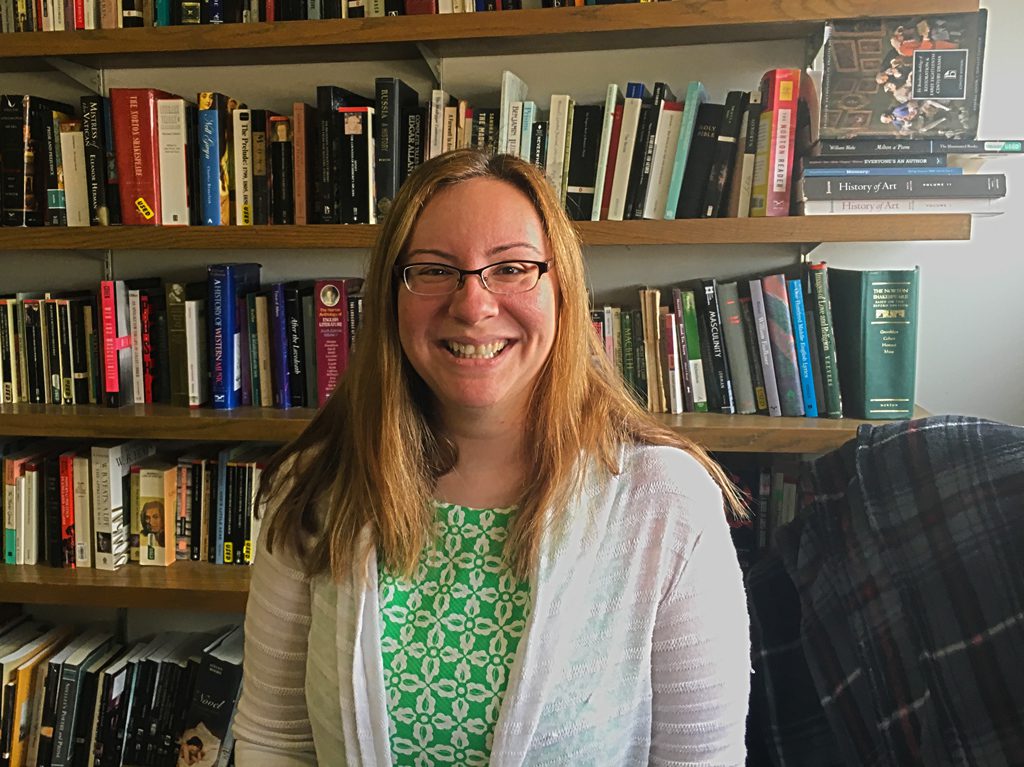
Thirty-five years ago at the University of Tulsa, famed feminist Germaine Greer launched Tulsa Studies in Women’s Literature, the first journal devoted solely to women’s literature and theory with groundbreaking articles, notes, research and reviews. Today it is edited by TU Professor Jennifer Airey, an 18th-century British literature specialist who focuses on gender and sexuality during England’s Restoration. We caught up with Airey and got her thoughts on …
… how the journal has changed.
In 1982, the scholarly landscape was vastly different than it is today – women’s voices were largely absent from literary criticism. The initial project of TSWL was … one of recovery, of unearthing women’s writings that had been long forgotten and consigned to cultural irrelevance. It has been one of the greatest successes of feminist scholarship that we now have a broader understanding of the literary canon and that women’s voices have been integrated into the literary curriculum. Under Shari Benstock, who succeeded Greer as editor, the journal [moved] beyond recovery – although we still remain deeply interested in newly discovered works – to analysis and theorization. The journal has grown more international in scope, encouraging submissions … on authors across all cultures and nationalities.
… the journal’s focus.
Women’s writing matters. We remain firm in our commitment to bring to light new voices and new understandings of gender and literature. We are also deeply committed to intersectional feminism, the idea that we must examine not only gender, but its interactions with race, class, nationality [and] sexuality.
… academic databases and research.
Databases like JSTOR and Project MUSE have changed the way that people access our journal. They’ve broadened our reach considerably – people from all over the world [don’t have] to purchase a paper copy or subscribe. With download statistics, we get a good sense of which articles are particularly popular. On the downside … our number of individual subscribers has also decreased, so we’re more dependent on database revenue to sustain ourselves now. Our readers are more likely to download a single article rather than sitting down to peruse the journal cover to cover. I do worry about this a little bit. The scope of our scholarship is one of our greatest strengths. Just downloading individual articles … encourages isolation within our historical fields, when really we can learn a lot from one another by reading across periods.
… keeping the journal fresh.
We publish the highest-quality literary criticism. Our acceptance rate for articles is about 10 percent. Secondly, we publish special issues on topics … relevant to our readership, ranging from breast cancer narratives and Catholic women writers to our award-winning special issue on Mary Leapor and Ann Yearsley, two working-class 18th-century women poets. Coming up, we will [devote] issues to young adult women’s literature, Latin American women authors, and women and archival research.
… the journal’s direction.
I’d like TSWL to provide a forum not only for scholarship but for thinking about what it means to be a scholar of women’s literature in our current political and historical moment. I hope that TSWL can provide a space for thinking about the ways in which gender inflects our teaching and our research.
… the academic cutting edge.
As the field of women’s studies has grown and developed, TSWL has grown and developed alongside it … influencing the field even as we grow with it.

























